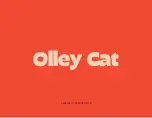
17
• If an extension cable is used never overload it by plugging in
appliances that together will exceed the maximum current rating
stated for the extension cable. Block adaptors are not to be
used. – Risk of fire.
• Ensure multiple socket outlets are not positioned under the
support platform - Liquids that leak onto such a socket could
pose an electrical / fire risk.
• Consideration is to be taken in the positioning of the mains cable
and air hose to minimise the risk of accidental strangulation
resulting from patient, baby or child entanglement – Drive
DeVilbiss Healthcare Ltd. recommend the use of the mains
cable routing sheath that is incorporated down the length of the
mattress.
• Keep away from sources of heat and naked flames (e.g.
cigarettes, fireplaces, electric fires, fan heaters, electric blankets
etc.) – Risk of damage / fire.
• Avoid placing the mattress system in a moisture rich environment
- Prolonged exposure to moisture could damage the electrical
system and pose an electrical/fire risk.
• Ensure the cushion is used with a compatibly sized chair –
incorrect combinations can lead to entrapments/falls hazards
• Incompatible support platforms (e.g. a bed or mattress, or a chair
or cushion) can create safety/stability hazards
• Before use, it is important to ensure the patient can reposition
themselves, or will be repositioned on a regular basis; please
follow local policies, recognised national or international
guidance.
Warning
9. OPERATION
The following conditions should be followed when operating the system:
• Ambient temperature:
+5°C to +40°C.
• Humidity:
15-93%, non-condensing.
• Atmospheric pressure:
700 hPa to 1060 hPa
9.1
Environmental Limits when in Operation
Prior to patient use of the dynamic system the following must be performed:
• Ensure the support platform and support surface are at room temperature.
• Ensure that both have been cleaned and disinfected (see section 10).
• Ensure the support surface cover has been checked for tears, punctures,
abrasion marks etc. and that their are no signs of fluid ingress.
9.2
Preparing for Use
















































